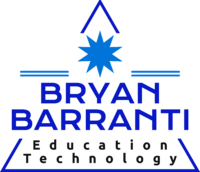In a recent conversation with Valerie Irvine, David Wiley shared insightful reflections on the open education movement, the impact of copyright laws, and the intersection of artificial intelligence and openness. A key takeaway that resonated with me was the idea of making a deliberate decision to work only with open resources, even if it feels limiting at first.
Wiley explained how the Berne Convention fundamentally changed copyright by automatically protecting every creation, whether intended for commercial use or not. This shift made it harder to share knowledge freely. In response, the open source movement and later the open educational resources movement provided pathways to reclaim creative freedom.
A particularly compelling idea was how choosing to work exclusively with open materials, while seemingly restrictive, ultimately grants more freedom. Once that decision is made, the worry about legal issues disappears, allowing creators to focus purely on innovation and education. This mindset aligns with my own experiences in teaching woodwork. Constraints can spark creativity rather than stifle it.
One example from my woodworking classes is the hand tool puzzle project I assign to all grades at the beginning of the year. Students are limited to using only hand tools, no power tools, no CNC, no laser engraving. At first, this constraint seems frustrating because they are used to technology speeding up the process. However, it forces them to think differently about precision, material choice, and technique.
Students often discover creative solutions they might not have considered if they had access to modern tools. For example, one student wanted to create a more complex interlocking puzzle but struggled to cut perfectly smooth joints with a coping saw. Instead of giving up, they experimented with different types of chisels to refine the edges, learning a new skill in the process. This kind of adaptation mirrors the experience of working exclusively with open resources. While it may seem restrictive at first, it encourages deeper learning, problem solving, and resourcefulness.
The conversation also touched on the role of artificial intelligence in open education. AI generated content, by default, lacks copyright protection, making it inherently open. This presents exciting opportunities for teachers and learners alike. Wiley described AI as a more knowledgeable other (taken from Vygotsky’s Zone of Proximal Development) that expands our ability to learn and create. Whether it is translating text, generating code, or crafting personalized explanations, AI enhances access to knowledge in ways that were once unimaginable.
As teachers, we have a choice in how we approach openness. Do we navigate the risks of restrictive licensing, or do we embrace the freedom that open resources provide? Wiley’s journey and insights reinforce that working within an open ecosystem is not just a legal workaround, it is a philosophy that empowers learning, sharing, and innovation.
